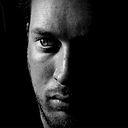Member-only story
Let’s take a look at simulating portrait lighting using the excellent open source software Blender.
If you don’t know what Blender is, it’s a free to use open source tool for 3d modelling, sculpting, compositing, vfx, video editing and is even used to make 3d assets for use in video games. You might think that being free and open source makes it limited in quality, but it’s super powerful and we are just going to look at something pretty basic that might be of interest for photographers to help setup portrait lighting.
This isn’t a tutorial on how to use Blender, just a quick and dirty look at a way to use it to get an idea of how to setup lighting for a studio portrait. So, we’ll fire up Blender, import in a 3d model of a person, set up some lights and get rendering.
For my basic setup I’ve imported a posed female base mesh model. I’ve removed any materials which will give us a plain white mannequin type model in our render. I’ve moved the default camera to be front on and set it to an 85mm focal length. I’ve also added an empty placed on the right eye of our mannequin and set the focus of the camera to it. I’ve enabled depth of field for the camera as well. I’ve also removed the default light and set the world strength to 0 to give us a pitch black scene if we rendered it.
